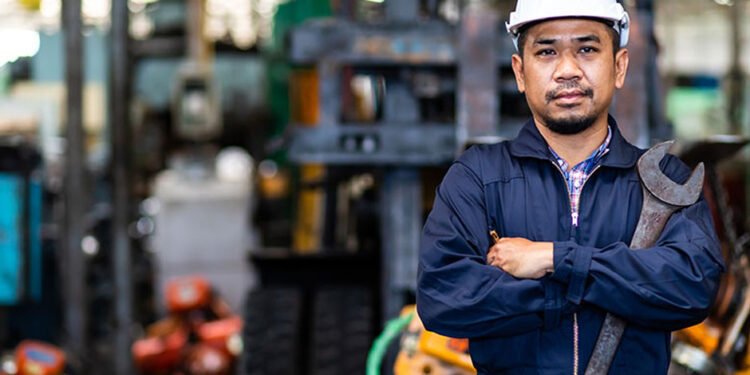Maintaining industrial equipment is crucial for ensuring operational efficiency and minimizing downtime. However, troubleshooting these complex systems can be challenging. This blog post provides a comprehensive guide to diagnosing and resolving common issues in industrial equipment, covering everything from initial steps to preventative maintenance and professional services.
Common Issues in Industrial Equipment
Industrial equipment can experience various problems, each requiring specific troubleshooting methods. The most common issues include mechanical failures, hydraulic system problems, pneumatic system issues, and electrical faults. Mechanical failures are often caused by wear and tear, misalignment, or lubrication problems. Hydraulic systems can suffer from leaks, pressure loss, and contamination. Pneumatic systems frequently face air leaks, pressure fluctuations, and component failures. Electrical faults, such as short circuits, grounding problems, and faulty components, are common. Understanding these issues is the first step in effective troubleshooting.
Initial Steps for Troubleshooting
Before diving into the specifics of each system, it’s essential to follow some general troubleshooting steps. Start with safety precautions, ensuring all safety protocols are in place, disconnecting power sources, and wearing appropriate protective gear. Gather necessary tools and documentation, including relevant manuals, tools, and diagnostic equipment. Conduct a visual inspection to look for signs of damage, wear, or misalignment. Finally, identify symptoms and patterns, document the symptoms, and note any patterns to help pinpoint the issue.
Mechanical Failures
Mechanical issues are often the result of wear and tear or misalignment. Common problems include worn-out bearings, gears, and other moving parts. Misaligned components can cause excessive wear and vibrations. Diagnostic techniques such as vibration analysis can detect misalignment and imbalance, while visual inspections and calipers can measure wear. Repair and maintenance tips include promptly replacing worn components and regularly lubricating moving parts to reduce friction and wear.
Hydraulic System Problems
Hydraulic systems are prone to issues such as leaks and pressure loss. Common problems include oil leaks and slow or erratic actuator movement. Methods for diagnosing hydraulic system faults involve using a pressure gauge to check system pressure and inspecting hoses and fittings for leaks. Steps for repairing and maintaining hydraulic systems include tightening or replacing leaking fittings and replacing worn or damaged hoses and seals.
Pneumatic System Issues
Pneumatic systems often face problems like air leaks and pressure fluctuations. Typical issues include hissing sounds indicating leaks and inconsistent pressure delivery. Troubleshooting involves using a soapy water solution to detect air leaks and checking the pressure regulator for proper settings. Best practices for maintaining pneumatic equipment include regularly inspecting hoses and connectors and ensuring adequate lubrication of pneumatic tools and components.
Electrical Maintenance
Electrical maintenance is critical for the safe and efficient operation of industrial equipment. Common electrical issues include short circuits, grounding problems, and faulty components. Diagnostic tools and techniques for electrical faults involve using multimeters to measure voltage, current, and resistance and oscilloscopes to visualize electrical signals and identify anomalies. Steps for repairing electrical components include replacing faulty wires and connectors and ensuring proper grounding and insulation. Preventative maintenance practices for electrical systems involve regularly inspecting electrical panels and connections and keeping electrical components clean and free from dust and moisture.
Utilizing Diagnostic Tools
Having the right diagnostic tools is essential for effective troubleshooting. Key tools include multimeters, oscilloscopes, and thermal cameras. Multimeters measure electrical properties and identify faults, performant oscilloscopes analyze electrical signals for deeper insights, and thermal cameras detect overheating components. To use these diagnostic tools effectively, follow the manufacturer’s instructions and compare measurements against standard values to identify discrepancies.
Implementing Preventative Maintenance
Preventative maintenance is vital for extending the lifespan of industrial equipment. Developing a preventative maintenance schedule ensures regular maintenance checks to prevent unexpected failures. Tips for maintaining equipment longevity include following manufacturer guidelines for routine maintenance. Training staff for effective maintenance practices ensures maintenance personnel are well-trained and updated on best practices.
Partnering with Professional Services
Outsourcing complex troubleshooting tasks to professional service providers can be beneficial. Professional maintenance services bring expertise and specialized tools to handle complex issues. When selecting a maintenance provider, choose one with a proven track record and industry experience. Ensuring quality and reliability in professional services involves regularly reviewing the performance of your service provider to ensure they meet your standards.
Conclusion
Troubleshooting issues in industrial equipment requires a systematic approach and the right tools. You can ensure your equipment operates efficiently and reliably by understanding common problems, following general troubleshooting steps, and implementing preventative maintenance. Partnering with professional maintenance services can further enhance your maintenance strategy. Implement these best practices to keep your industrial equipment in top condition.












